
The Enchanting Blue Pearl of Morocco: Chefchaouen
Discover Chefchaouen, the Blue Pearl of Morocco, where enchanting blue streets, vibrant markets, and natural beauty create an unforgettable travel experience.
Nestled in the Rif Mountains, Chefchaouen, also known as the Blue Pearl of Morocco, is a charming town renowned for its striking blue-washed buildings. This picturesque destination offers a tranquil escape from the hustle and bustle of larger Moroccan cities, with its maze-like medina exuding an air of serenity and timeless beauty. Wander through Chefchaouen's narrow, winding streets and discover local handicrafts, including woven blankets and intricate leather goods. The town is a haven for photographers, with every corner presenting a new, breathtaking view of the blue-hued architecture against the backdrop of rugged mountain scenery. For nature enthusiasts, the surrounding region offers excellent hiking trails, such as those leading to the Akchour Waterfalls and the Talassemtane National Park. These natural wonders provide a refreshing complement to the cultural richness found within the town. Chefchaouen is also known for its culinary delights, featuring traditional Moroccan dishes like tagine and couscous, often prepared with fresh, locally sourced ingredients. The town's relaxed atmosphere extends to its many cafes, where you can savor mint tea while soaking in the unique ambiance. Whether you're exploring its vibrant markets, enjoying the local cuisine, or simply taking in the stunning views, Chefchaouen promises an unforgettable experience that captures the essence of Moroccan charm.
Local tips in Chefchaouen Region
- Visit early in the morning to avoid the crowds and capture the best photos.
- Dress modestly to respect local customs, especially when visiting religious sites.
- Carry cash, as many small shops and cafes do not accept credit cards.
- Hire a local guide for hiking trails to ensure safety and gain insights into the area.
- Try the local goat cheese, a specialty of the region, available in markets and restaurants.
The Enchanting Blue Pearl of Morocco: Chefchaouen
Nestled in the Rif Mountains, Chefchaouen, also known as the Blue Pearl of Morocco, is a charming town renowned for its striking blue-washed buildings. This picturesque destination offers a tranquil escape from the hustle and bustle of larger Moroccan cities, with its maze-like medina exuding an air of serenity and timeless beauty. Wander through Chefchaouen's narrow, winding streets and discover local handicrafts, including woven blankets and intricate leather goods. The town is a haven for photographers, with every corner presenting a new, breathtaking view of the blue-hued architecture against the backdrop of rugged mountain scenery. For nature enthusiasts, the surrounding region offers excellent hiking trails, such as those leading to the Akchour Waterfalls and the Talassemtane National Park. These natural wonders provide a refreshing complement to the cultural richness found within the town. Chefchaouen is also known for its culinary delights, featuring traditional Moroccan dishes like tagine and couscous, often prepared with fresh, locally sourced ingredients. The town's relaxed atmosphere extends to its many cafes, where you can savor mint tea while soaking in the unique ambiance. Whether you're exploring its vibrant markets, enjoying the local cuisine, or simply taking in the stunning views, Chefchaouen promises an unforgettable experience that captures the essence of Moroccan charm.
When is the best time to go to Chefchaouen Region?
Iconic landmarks you can’t miss
Ras El Ma
Explore the serene beauty of Ras El Ma, a state park in Chefchaouen, Morocco, featuring stunning landscapes and tranquil waters.

Kasbah
Discover the stunning blue-washed Kasbah of Chefchaouen, a historical landmark that embodies Morocco's rich cultural heritage and architectural beauty.

Chefchaouen Medina
Explore the mesmerizing blue streets of Chefchaouen Medina, a historical gem in the heart of Morocco, rich in culture and stunning mountain views.
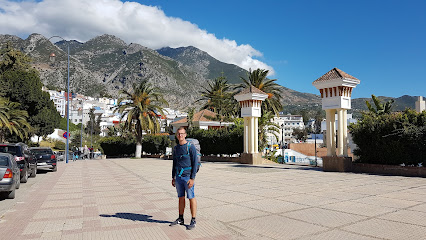
Place El Haouta
Immerse yourself in the vibrant culture of Place El Haouta, a picturesque square in Chefchaouen showcasing stunning architecture and local crafts.

Bab El Ain
Explore the historical charm of Bab El Ain in Chefchaouen, a stunning landmark rich in culture and vibrant local life.

Chefchaouen
Explore the captivating blue streets of Chefchaouen, Morocco's hidden gem, where vibrant culture meets stunning natural beauty.

Plaza Mohammed V
Experience the charm of Plaza Mohammed V in Chefchaouen, where vibrant culture meets serene beauty amidst the iconic blue city.
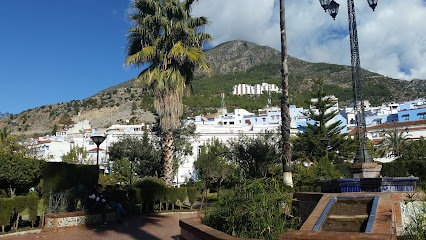
Plaza Uta el Hamman
Explore the vibrant Plaza Uta el Hamman, the heart of Chefchaouen, surrounded by stunning architecture, artisan shops, and local cuisine in Morocco's Blue Pearl.

Casa Familia
Discover the charm of Chefchaouen at Casa Familia, a serene hotel offering comfort, culture, and stunning mountain views for the perfect Moroccan getaway.

Chefchaouen Gate
Discover the iconic Chefchaouen Gate, your gateway to the stunning blue city of Chefchaouen, where beauty, culture, and adventure await.

Bab Chaouen
Discover the captivating beauty of Bab Chaouen, a picturesque Moroccan gem known for its stunning blue streets, rich culture, and vibrant local cuisine.

Ethnographic Museum of Chefchaouen
Explore the Ethnographic Museum of Chefchaouen to uncover the rich cultural heritage and traditions of this charming Moroccan city.
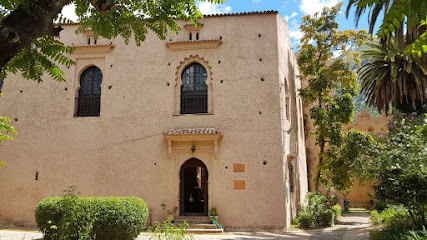
سور المدينة القديمة الاثري
Discover the enchanting historical landmark of Chefchaouen, where blue streets meet rich Moroccan history and stunning mountain views.

Bab el Mahrouk
Explore the vibrant streets of Chefchaouen starting from Bab el Mahrouk, your gateway to the enchanting blue city of Morocco.

Parc National de Talassemtane
Explore the breathtaking landscapes of Parc National de Talassemtane, a paradise for nature lovers and adventure seekers near Chefchaouen.

Unmissable attractions to see
Park Sidi Abdelhamid
Discover tranquility and natural beauty at Park Sidi Abdelhamid in Chefchaouen, a perfect retreat for relaxation and exploration.

Jebel El-Kelaa Summit
Explore the breathtaking Jebel El-Kelaa Summit in Chefchaouen, where stunning trails and panoramic views await every adventurer.

Plaza España (pinsapar)
Discover tranquility at Plaza España, a scenic park in Beni M'Hammed perfect for picnics and relaxation amidst nature's beauty.

Ensemble d'artisanat complexe
Explore the vibrant artisan complex in Chefchaouen, where local craftsmanship and rich cultural heritage come alive in every handmade piece.

دوار وسلاف جماعة تلمبوط شفشاون
Explore the breathtaking hiking trails of Dwar Waslaf in Akchour, a hidden gem near Chefchaouen, perfect for nature lovers and adventure seekers.

vue panoramique de la plage
Discover the breathtaking beauty of the Vue Panoramique de la Plage, a hiking area with stunning views of Morocco's coastline.

العقبة دأزرا
Experience the breathtaking landscapes and tranquil hikes of Al Aqaba Daazra, a hidden gem in the heart of Morocco's natural beauty.

قمة جبل البرج
Discover the breathtaking beauty and serene hiking trails of Jebel al-Burj in Chefchaouen, Morocco, where adventure awaits in nature's embrace.

Cave Acher
Explore the enchanting trails of Cave Acher, a stunning hiking area in Morocco, perfect for outdoor enthusiasts and nature lovers alike.

لوبار الفقية
Discover the breathtaking beauty of لوبار الفقية in Chefchaouen, a hiker's paradise filled with stunning landscapes and rich biodiversity.

Blue Medina Tours
Experience the enchanting blue streets of Chefchaouen with Blue Medina Tours, where culture, nature, and history come together in Morocco's stunning mountains.

Essential places to dine
Cafe Clock
Experience authentic Moroccan cuisine at Cafe Clock in Chefchaouen, where every dish tells a story amidst vibrant culture.

Assaada
Experience authentic Moroccan cuisine at Assaada in Chefchaouen, where every dish tells a story and every bite is a taste of tradition.

Restaurant Morisco
Experience authentic Moroccan flavors at Restaurant Morisco in Chefchaouen, where culinary tradition meets modern dining.

Chez Hicham
Discover authentic Moroccan cuisine and hospitality at Chez Hicham in Chefchaouen - your gateway to cultural immersion.

Restaurant Triana
Experience the flavors of Morocco at Restaurant Triana in Chefchaouen - where culinary tradition meets modern taste.

BILMOS
Discover delightful culinary experiences at Bilmos in Chefchaouen—where Moroccan flavors meet international cuisine amidst stunning surroundings.

Bar Oum Rabie
Experience the authentic flavors of Morocco at Bar Oum Rabie, where delicious grilled dishes meet fine wines in Chefchaouen's stunning backdrop.

Toda Creperie & Ice Cream
Experience delightful crepes and artisanal ice cream at Toda Creperie & Ice Cream in Chefchaouen - where every bite is a taste of happiness.

MIDO'S
Experience fast food like never before at Mido's in Chefchaouen – where Moroccan flavors meet quick service for an unforgettable meal.

Restaurant Al Wiam
Discover authentic Moroccan cuisine at Restaurant Al Wiam in Chefchaouen - a true feast for your senses amidst stunning blue-hued surroundings.

Café Sindibad
Experience authentic Moroccan cuisine at Café Sindibad in Chefchaouen - where every meal tells a story!

Le Coin
Experience authentic Moroccan cuisine at Le Coin, nestled in Chefchaouen's vibrant blue streets.

Casa Arina
Discover Casa Arina in Chefchaouen: A delightful restaurant offering authentic Moroccan cuisine amidst stunning blue surroundings.

Tissemlal
Discover authentic Moroccan flavors at Tissemlal in Chefchaouen - a culinary gem nestled amidst stunning landscapes.

Chez Foad
Experience authentic Moroccan cuisine in Chefchaouen at Chez Foad - where tradition meets flavor in every dish.

Markets, malls and hidden boutiques
La Botica De La Abuela De Aladdin
Explore the enchanting La Botica De La Abuela De Aladdin, an organic shop in Chefchaouen offering a unique blend of local herbs, spices, and traditional Moroccan products.

FORNACCIO- Coffe & Kitchen
Discover the delightful flavors of Fornaccio in Chefchaouen, where organic cuisine meets the finest coffee in a vibrant atmosphere.

La Vida Colorada
Discover La Vida Colorada in Chefchaouen for unique home goods and local handicrafts that embody the vibrant spirit of Morocco's blue city.
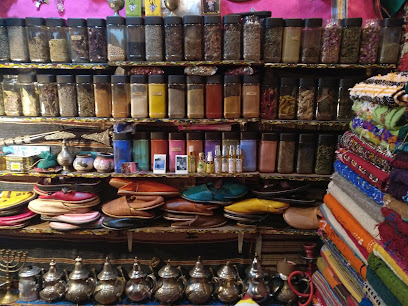
Patisserie Pain Chaouen
Experience the sweet taste of Chefchaouen at Patisserie Pain Chaouen, where delightful pastries and Moroccan treats await every visitor.

Jabir shop chefchaouen
Explore Jabir Shop in Chefchaouen for unique Moroccan gifts and an authentic shopping experience in the heart of the blue city.

Dar Moulay Idriss
Discover exquisite handwoven carpets at Dar Moulay Idriss in Chefchaouen, where traditional Moroccan craftsmanship meets vibrant artistry.
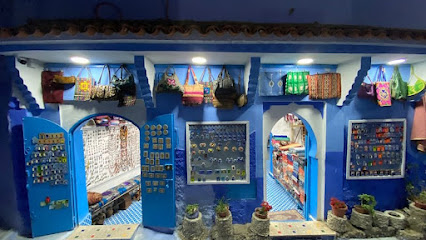
Nous Nous Cafe
Experience the essence of Moroccan coffee culture at Nous Nous Cafe, a charming coffee shop in the picturesque streets of Chefchaouen.

Boutique EL-ASRI
Explore the vibrant world of men's fashion at Boutique EL-ASRI in Chefchaouen, where style meets Moroccan culture.

Hibart Souvenirs Shop
Discover the beauty of Moroccan craftsmanship at Hibart Souvenirs Shop in Chefchaouen, where unique handmade treasures await.

Chefchaouen crafts
Discover the charm of Chefchaouen Crafts, where every handmade gift reflects the artistic heritage of Morocco's blue city.

CHAOUEN GIFTS
Explore the heart of Moroccan craftsmanship at Chaouen Gifts, where every item is a unique reflection of Chefchaouen's rich culture and artistry.

Original Moroccan clothes
Explore the vibrant world of Moroccan fashion at Original Moroccan Clothes in Chefchaouen—an essential stop for authentic cultural treasures.

Bukhara & Silk
Explore the artistry of Morocco at Bukhara & Silk in Chefchaouen – a boutique brimming with unique clothing, accessories, and authentic local crafts.
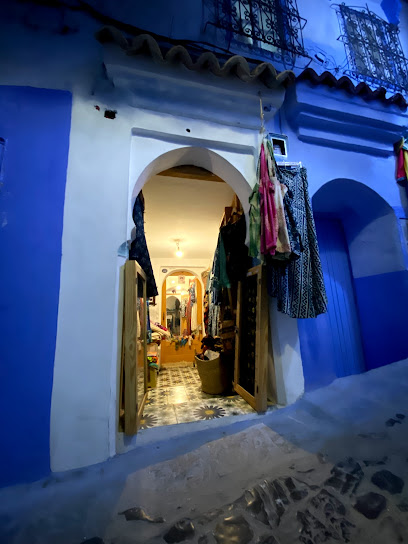
Chefchaouen copper and lamps shop
Explore the exquisite craftsmanship of Chefchaouen's Copper and Lamps Shop, where tradition meets artistry in every unique piece.

Essential bars & hidden hideouts
Cafe Clock
Experience the flavors of Morocco at Cafe Clock in Chefchaouen, where tradition meets contemporary dining for an unforgettable meal.

Restaurant Morisco
Experience the authentic flavors of Morocco at Restaurant Morisco, a culinary gem in the heart of Chefchaouen, offering delicious dishes at affordable prices.

Chez Hicham
Discover the heart of Moroccan cuisine and hospitality at Chez Hicham in the enchanting Blue City of Chefchaouen.

BILMOS
Experience the authentic flavors of Morocco at Bilmos, a charming restaurant in the heart of Chefchaouen, offering delightful dishes and a warm atmosphere.

Bar Oum Rabie
Experience the rich flavors of Moroccan cuisine at Bar Oum Rabie in Chefchaouen, where grilled delicacies meet fine wine in a vibrant atmosphere.

Restaurant Lalla Messaouda
Experience authentic Moroccan cuisine in the heart of Chefchaouen at Restaurant Lalla Messaouda, where every dish tells a story.

Galitos
Experience the perfect blend of Moroccan and Italian cuisine at Galitos, a must-visit restaurant in the heart of Chefchaouen.
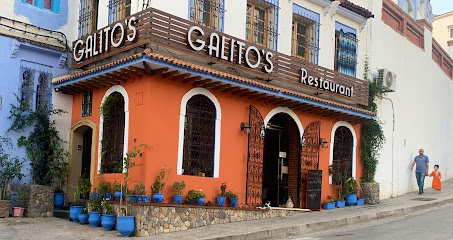
The Magic Lamp House of Aladin
Experience the best of Moroccan cuisine with a sweet twist at The Magic Lamp House of Aladin in Targha, where flavors come to life in a cozy setting.

Toda Creperie & Ice Cream
Discover the flavors of Morocco at Toda Creperie & Ice Cream in Chefchaouen, where savory crepes and sweet delights await you.
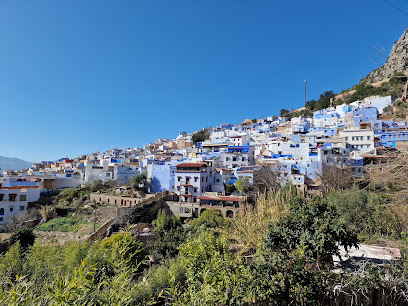
Restaurant Al Wiam
Experience the rich flavors of authentic Moroccan cuisine at Restaurant Al Wiam, Chefchaouen's culinary gem.

Restaurant Hamsa
Discover authentic Moroccan cuisine and tea culture at Restaurant Hamsa in Chefchaouen, an inviting culinary oasis amidst stunning blue streets.

Café Sindibad
Experience the rich flavors of Moroccan cuisine at Café Sindibad in the heart of Chefchaouen, where every meal is a celebration of culture.

Restaurant Terrasse Djebli
Experience the flavors of Morocco with stunning mountain views at Restaurant Terrasse Djebli in Chefchaouen.
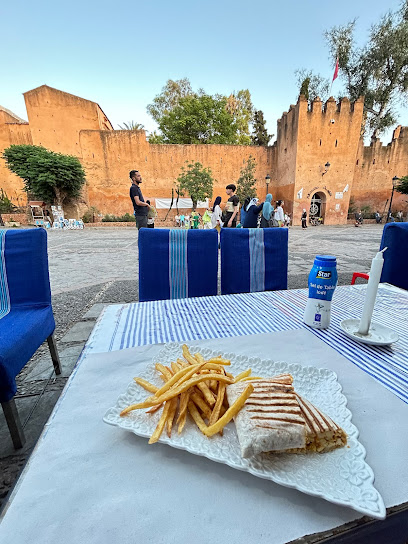
Restaurant Jbaria
Experience the best of Moroccan flavors at Restaurant Jbaria in Chefchaouen, where authentic cuisine meets a charming atmosphere.

Bab Souk
Discover authentic Moroccan flavors at Bab Souk, a charming restaurant in Chefchaouen known for its delightful dishes and inviting atmosphere.

Local Phrases about Chefchaouen Region
-
- Helloمرحبا
[marhaba] - Goodbyeوداعا
[wada'an] - Yesنعم
[naam] - Noلا
[la] - Please/You're welcomeمن فضلك
[min fadlik] - Thank youشكرا
[shukran] - Excuse me/Sorryعذرا
[u'dhiran] - How are you?كيف حالك؟
[kayfa halik?] - Fine. And you?بخير، وأنت؟
[bikhayr, wa'ant?] - Do you speak English?هل تتحدث الإنجليزية؟
[hal tatahadath al'injlizia?] - I don't understandأنا لا أفهم
[ana la afham]
- Helloمرحبا
-
- I'd like to see the menu, pleaseأود أن أرى القائمة، من فضلك
[awad an ara alqaima, min fadlik] - I don't eat meatأنا لا آكل اللحوم
[ana la akl allahum] - Cheers!صحتين!
[sahatayn] - I would like to pay, pleaseأود أن أدفع، من فضلك
[awad an adfa', min fadlik]
- I'd like to see the menu, pleaseأود أن أرى القائمة، من فضلك
-
- Help!النجدة!
[alnajda!] - Go away!اذهب بعيدا!
[idhab ba'idan!] - Call the Police!اتصل بالشرطة!
[atassil bialshurta!] - Call a doctor!اتصل بطبيب!
[atassil bitalib!] - I'm lostلقد ضللت
[laqad dalalt] - I'm illأنا مريض
[ana mareed]
- Help!النجدة!
-
- I'd like to buy...أود أن أشتري...
[awad an ashtari...] - I'm just lookingأنا فقط أتفرج
[ana faqat atfarij] - How much is it?كم تبلغ السعر؟
[kam tablagh alsi'r?] - That's too expensiveهذا غالي جدا
[hatha ghali jiddan] - Can you lower the price?هل يمكنك تخفيض السعر؟
[hal yumkinuka takhfid alsi'r?]
- I'd like to buy...أود أن أشتري...
-
- What time is it?كم الساعة؟
[kam alssaa'a?] - It's one o'clockالساعة الواحدة
[alssaa'a alwahida] - Half past (10)الساعة العاشرة والنصف
[alssaa'a alashira walnisf] - Morningالصباح
[assabah] - Afternoonالمساء
[almasa] - Eveningالليل
[allayl] - Yesterdayأمس
[ams] - Todayاليوم
[alyawm] - Tomorrowغدا
[ghadan] - 1واحد
[wahid] - 2اثنان
[ithnan] - 3ثلاثة
[thalatha] - 4أربعة
[arba'a] - 5خمسة
[khamsa] - 6ستة
[sitta] - 7سبعة
[sab'a] - 8ثمانية
[thamania] - 9تسعة
[tasia] - 10عشرة
[ashara]
- What time is it?كم الساعة؟
-
- Where's a/the...?أين هو/هي...؟
[ayn huwa/hiya...?] - What's the address?ما هو العنوان؟
[ma huwa al'unnwan?] - Can you show me (on the map)?هل يمكنك أن تريني (على الخريطة)؟
[hal yumkinuka an tureeni (ala alkhareeta)?] - When's the next (bus)?متى يأتي الحافلة التالية؟
[mata yaati alhafla altaliya?] - A ticket (to ....)تذكرة (إلى ...)
[tazkira (ila ...)]
- Where's a/the...?أين هو/هي...؟
History of Chefchaouen Region
-
Chefchaouen was founded in 1471 by Moulay Ali Ben Moussa Ben Rached El Alami. It was established as a small fortress to fight against the Portuguese invasions of northern Morocco. The town's strategic location in the Rif Mountains made it an ideal place for defense and refuge.
-
In the late 15th century, many Jews and Moors fled southern Spain to escape the Reconquista. They found refuge in Chefchaouen, bringing with them their traditions, culture, and architectural styles. This diverse blend of cultures left a lasting impact on the town’s character, which is still evident today in its blue-painted buildings and narrow, winding streets.
-
Chefchaouen is famously known as 'The Blue City' due to its vivid blue-washed buildings. While the exact reason for the blue hue is debated, some believe it was introduced by Jewish refugees in the 1930s as a symbolic gesture representing the sky and heaven. Others argue it helps keep mosquitoes away or simply serves to attract tourists.
-
In 1920, during the Rif War, Chefchaouen fell under Spanish control and became part of Spanish Morocco. The Spanish influence is still noticeable in the town’s infrastructure and some of its customs. Chefchaouen remained under Spanish occupation until Morocco gained independence in 1956.
-
The Rif War (1920-1926) was a significant conflict between the Berber tribes of the Rif region and the Spanish and French colonial forces. The war saw the Berber leader Abd el-Krim proclaim the Republic of the Rif in 1921. Although Chefchaouen played a less central role, it was impacted by the wider unrest in the region.
-
After Morocco gained independence in 1956, Chefchaouen began to attract more visitors due to its rich history, unique culture, and picturesque scenery. The town has since become a hub for artists, photographers, and travelers seeking to experience its tranquil beauty and historical richness. The preservation of its heritage and culture has been a priority, ensuring that the town remains a living museum of Moroccan and Andalusian history.
Chefchaouen Region Essentials
-
Chefchaouen is located in the Rif Mountains in northern Morocco. The nearest major international airport is Tangier Ibn Battouta Airport, approximately 120 kilometers away. From Tangier, you can take a bus or a shared taxi (grand taxi) to Chefchaouen, which takes about 2.5 to 3 hours. Alternatively, you can fly into the Fes-Saïss Airport, which is around 200 kilometers away, and then take a bus or taxi. The journey from Fes typically takes around 4 hours by road.
-
Chefchaouen is a relatively small town, and many of its attractions can be explored on foot. Public buses and grand taxis are available for travel to nearby towns and cities. For a more flexible option, you can rent a car, but be prepared for winding mountain roads. Scooters and bicycles are also available for rent if you prefer to explore at your own pace.
-
The official currency in Morocco is the Moroccan Dirham (MAD). Credit cards are accepted in some hotels, restaurants, and larger shops, but it is advisable to carry cash, especially in smaller establishments and markets. ATMs are available in Chefchaouen, but it is wise to withdraw sufficient cash before heading into more remote areas.
-
Chefchaouen is generally considered a safe destination for tourists. However, it is always important to take standard precautions. Avoid walking alone at night in unfamiliar areas and keep an eye on your belongings in crowded places like markets. While Chefchaouen does not have specific high-crime areas targeting tourists, it is always best to stay vigilant and aware of your surroundings.
-
In case of emergency, dial 19 for police assistance or 15 for medical emergencies. Chefchaouen has a local police station and medical facilities. It is recommended to have travel insurance that covers medical emergencies. For minor health issues, there are pharmacies where you can purchase over-the-counter medications.
-
Fashion: Do dress modestly. Avoid wearing revealing clothing, especially in religious or traditional areas. Religion: Do respect local customs and traditions. When visiting mosques, cover your head and remove your shoes. Public Transport: Do be respectful to other passengers. Don't eat or drink on public transport. Greetings: Do greet people with a handshake. In rural areas, a slight bow of the head is also a sign of respect. Eating & Drinking: Do try local delicacies and accept food offerings graciously. Don't refuse hospitality, as it is considered impolite.
-
To experience Chefchaouen like a local, visit the medina and explore its blue-painted streets. Engage with locals, who are often friendly and willing to share stories about their town. Don’t miss trying traditional Moroccan dishes such as tagine and couscous at local eateries. For a unique experience, take a hike in the nearby Rif Mountains, offering stunning views and a chance to see local Berber villages.
Trending Landmarks in Chefchaouen Region
Nearby Cities to Chefchaouen Region
-
Things To Do in Tetouan
-
Things To Do in Asilah
-
Things To Do in Tangier
-
Things To Do in Europa Point
-
Things To Do in Gorham's Cave Complex
-
Things To Do in St. Michael's Cave
-
Things To Do in Alameda Botanic Gardens
-
Things To Do in Queensway Quay Marina
-
Things To Do in Catalan Bay
-
Things To Do in Main Street
-
Things To Do in Gibraltar
-
Things To Do in Moorish Castle
-
Things To Do in Casemates Square
-
Things To Do in Fes
-
Things To Do in Meknes











